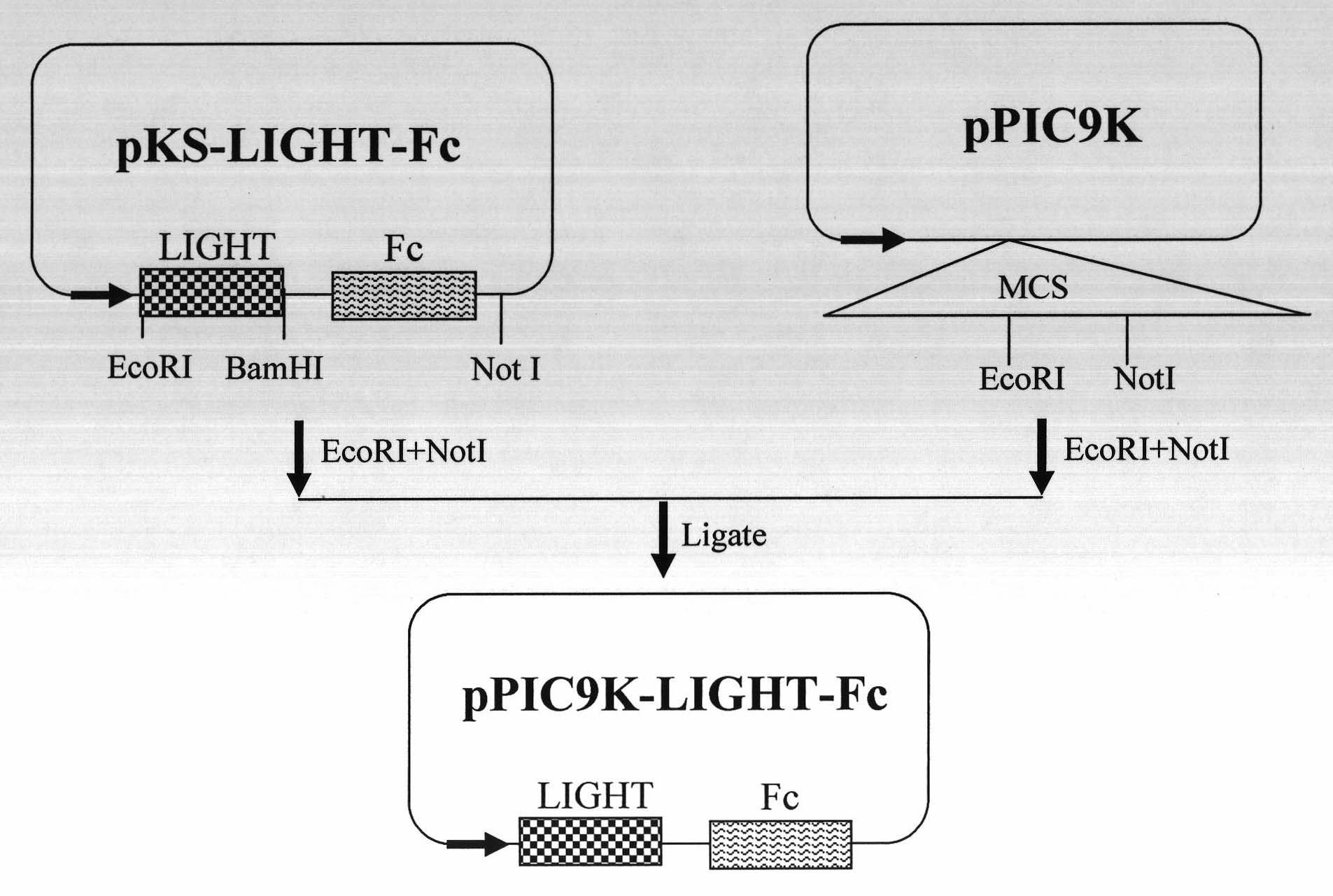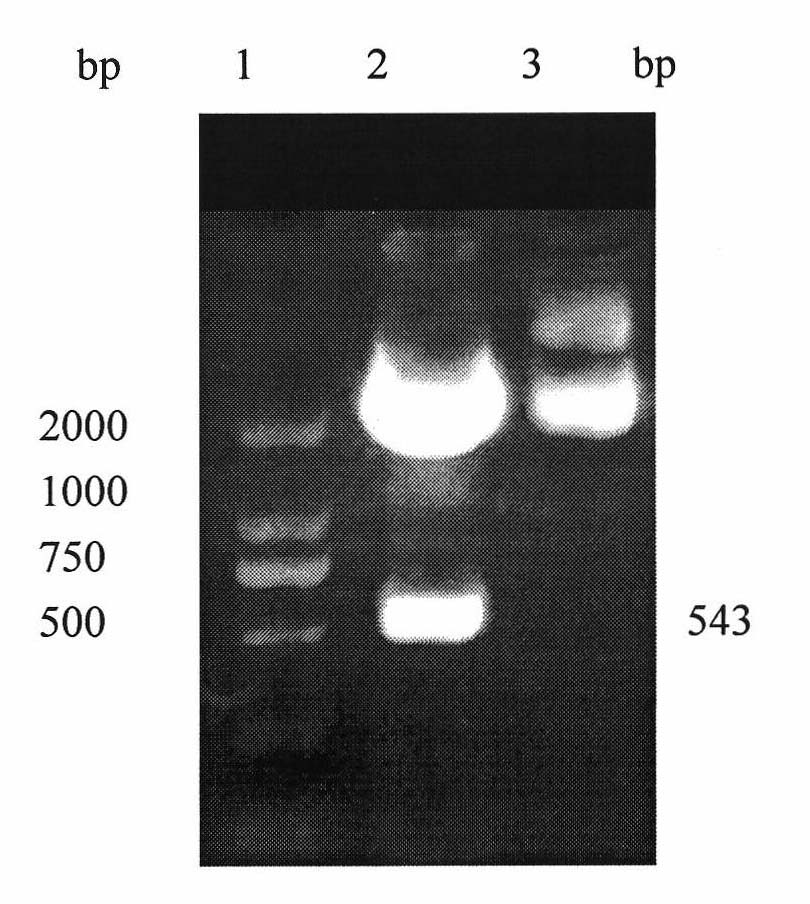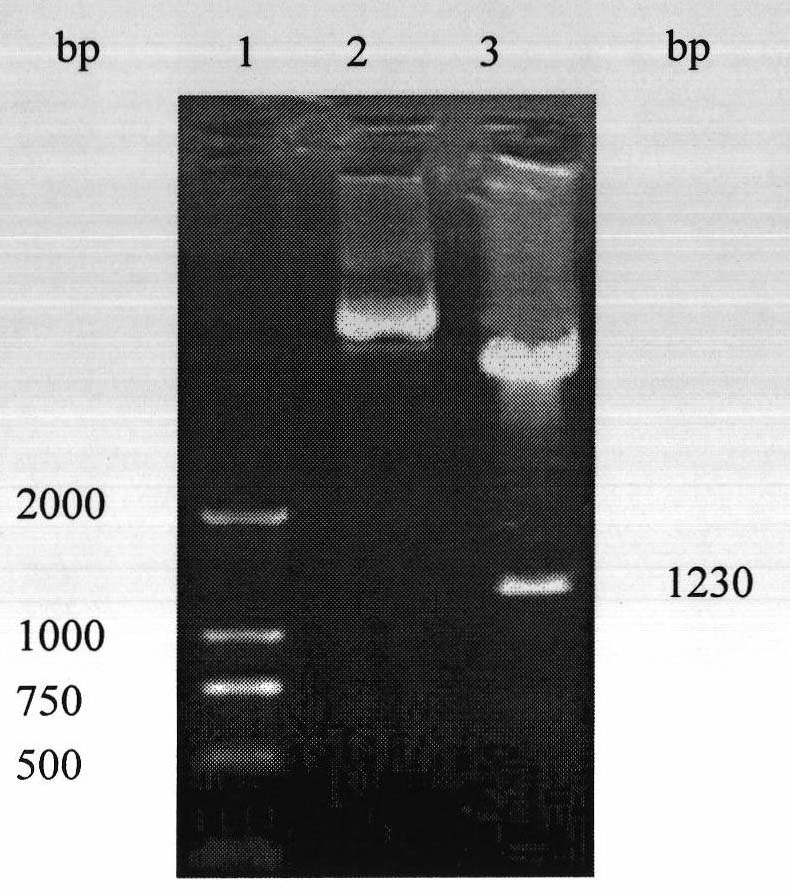Preparation method of human LIGHT-Fc fusion protein
A fusion protein, pks-light-fc technology, applied in the expression of LIGHT-Fc fusion protein in Pichia pastoris, and the construction of recombinant plasmid LIGHT-Fc-pPIC9K, to achieve easy separation and purification, good stability and simple operation Effect
- Summary
- Abstract
- Description
- Claims
- Application Information
AI Technical Summary
Problems solved by technology
Method used
Image
Examples
Embodiment 1
[0037] The flow chart of the construction of the recombinant plasmid LIGHT-Fc-pPIC9K is as follows: figure 1 As shown, the specific steps are as follows: 1. Design the following primers according to the human LIGHT gene sequence published by Genebank:
[0038] Primer 1: 5′-CCG GAATTC CAGCTGCACTGGCGTCTAGG-3' (the underlined part is the EcoR I restriction site, 178-197)
[0039] Primer 2: 5′-CGC GGATCC CACCATGAAAGCCCCGAAGT-3' (the underlined part is the BamH I restriction site, 701-720)
[0040] The pET32a-LIGHT recombinant plasmid was used as a template, and Primer 1 and Primer 2 were used as upstream and downstream primers for PCR reaction.
[0041] Reaction program: 95°C for 2min, 94°C for 30s, 55°C for 30s, 72°C for 1min, after 30 cycles, continue to extend at 72°C for 10min.
[0042] After the PCR product was identified by 1% agarose gel electrophoresis, it was recovered and purified according to the instructions of the DNA gel recovery kit to obtain a PCR product wit...
Embodiment 2
[0045] Transform the recombinant plasmid constructed in Example 1 into Pichia pastoris competent and screen multi-copy transformants. The specific steps are as follows:
[0046] 1. Preparation of Competent Pichia pastoris GS115
[0047] (1) Take the frozen GS115 yeast strain, streak it on a YPD plate, and culture it statically at 30°C for 36-48 hours until it grows a monoclonal colony.
[0048] (2) Pick a single clone colony and inoculate it into 5mL of YPD medium, culture at 30°C with shaking at 250rpm for 12-16h.
[0049] (3) Transfer 0.2 mL of bacterial liquid to 100 mL of YPD medium, culture at 30° C., 250 rpm for 12-16 hours with shaking until OD600 = 1.3-1.5.
[0050] (4) Centrifuge at 1500 rpm for 5 minutes at 4°C, discard the supernatant, and add 100 mL of ice-cold sterile double-distilled water to resuspend the pellet.
[0051] (5) Centrifuge at 4°C and 1500 rpm for 5 minutes, discard the supernatant, and add 50 mL of ice-cold sterile double-distilled water to resus...
Embodiment 3
[0088] The yeast transformants that were screened by G418 and identified as positive in Example 2 expressed the LIGHT-Fc fusion protein under the induction of yeast, and the specific steps were as follows:
[0089] 1. Induced expression of LIGHT-Fc fusion protein in Pichia pastoris
[0090] (1) Pick a single clone, inoculate it into 5 ml of YPD medium, and culture it with shaking at 250 rpm at 30°C for 16-18 hours.
[0091] (2) Inoculate 200μl of the bacterial solution into 20mL of BMGY medium, culture at 30°C, shake at 250rpm until OD 600 =2-6.
[0092] (3) Centrifuge at 1500-3000 rpm for 5 minutes at room temperature, and remove the supernatant.
[0093] (4) Wash the bacterial cell pellet once with sterile water.
[0094] (5) Resuspend the bacterial pellet with BMMY medium (if it is Mut +For transformants, add an equal volume of BMMY medium, if it is Mut s Type transformants, then add 1 / 5 times the volume of BMMY medium), 30 ° C, 250 rpm shaking culture for 96 h, supple...
PUM
 Login to View More
Login to View More Abstract
Description
Claims
Application Information
 Login to View More
Login to View More - R&D
- Intellectual Property
- Life Sciences
- Materials
- Tech Scout
- Unparalleled Data Quality
- Higher Quality Content
- 60% Fewer Hallucinations
Browse by: Latest US Patents, China's latest patents, Technical Efficacy Thesaurus, Application Domain, Technology Topic, Popular Technical Reports.
© 2025 PatSnap. All rights reserved.Legal|Privacy policy|Modern Slavery Act Transparency Statement|Sitemap|About US| Contact US: help@patsnap.com



